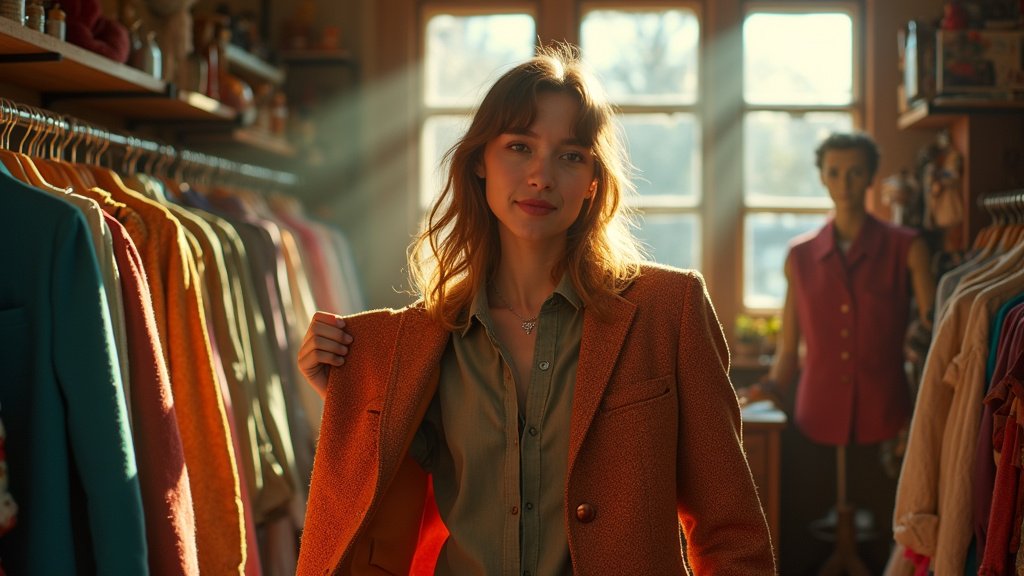The fashion world is undergoing a significant shift, and the latest news suggests that the allure of fast fashion is waning, making way for a more conscious and stylish approach: secondhand shopping. This evolving trend isn’t just about saving money; it’s a powerful statement against environmental degradation and a gateway to unique personal style. As the resale market booms, consumers are increasingly looking to pre-loved pieces to refresh their wardrobes sustainably. This article explains secondhand fashion and why it matters.
The Environmental Imperative of Pre-Loved Fashion — secondhand fashion
The impact of the traditional fashion industry, particularly fast fashion, on the planet is undeniable. Globally, the industry produces approximately 92 million tonnes of textile waste annually, with a significant portion ending up in landfills, where synthetic fibers can take hundreds of years to decompose. Producing new clothing also consumes vast amounts of resources; for instance, it can take up to 2,700 liters of water to create a single cotton t-shirt.
Shopping secondhand offers a compelling alternative. By giving garments a second life, consumers directly reduce the demand for new production, thereby conserving water, energy, and raw materials. Studies indicate that embracing secondhand consumption can lead to up to a 42% reduction in climate change impacts and cumulative energy demand compared to buying new. Furthermore, it diverts clothing from landfills and incinerators, mitigating pollution and greenhouse gas emissions. The growth of the secondhand market, projected to reach billions of dollars in the coming years, reflects a growing awareness and desire for more sustainable choices.
Curating Your Style: Looking Cool in Thrifted Finds
Beyond its environmental benefits, secondhand shopping offers an unparalleled opportunity for unique personal expression. Unlike mass-produced fast fashion, thrift stores and online resale platforms are treasure troves of one-of-a-kind items, vintage gems, and even designer pieces at a fraction of the original cost. The key to looking stylish in secondhand clothing lies in a thoughtful approach to curating your wardrobe.
Experts advise prioritizing quality over quantity. Look for well-constructed garments made from durable, natural fabrics like cotton, wool, silk, or linen, which tend to last longer and feel better. Examining stitching, seams, and functional details like buttons and zippers can help identify pieces built to endure. Styling thrifted finds involves a blend of the old and new: pair vintage blazers with modern basics, layer unique tops with classic denim, or accessorize a simple dress with statement vintage jewelry to create a look that is both current and personal. Embracing trends is possible, but it’s wiser to choose items that are trending but also have timeless appeal, allowing them to be worn for seasons to come.
Navigating the Secondhand Landscape and Avoiding Overconsumption
The accessibility of secondhand fashion has exploded with the rise of online platforms and resale apps. E-commerce giants like eBay and specialized sites such as ThredUp, The RealReal, Poshmark, and Vestiaire Collective have made it easier than ever to discover and purchase pre-loved items. Live auction apps are also offering new ways to engage with the secondhand market.
However, this increased accessibility can present a challenge: the risk of overconsumption. Studies suggest that individuals who shop secondhand may, paradoxically, buy more clothing and discard it faster than before, potentially contributing to greater textile waste. To shop truly sustainably, it’s crucial to shop with intention. Create a list of items you genuinely need, focus on versatile pieces that complement your existing wardrobe, and resist impulse buys driven by fleeting trends.
Extending the Lifespan: Care, Repair, and Longevity
Sustainable fashion extends beyond the purchase; it encompasses how we care for our clothes. Proper maintenance is vital for maximizing the lifespan of garments, whether new or secondhand. Always follow care labels, wash clothes less frequently using cold water and gentle detergents, and opt for air-drying when possible.
Proper storage also plays a significant role. Use appropriate hangers for different garment types, fold heavy knits to prevent stretching, and store clothes in a cool, dry place away from direct sunlight. Learning basic sewing skills for minor repairs, such as reattaching a button or mending a seam, can prevent perfectly good items from being discarded prematurely.
A Growing Movement in Fashion News: Oregon’s Eco-Conscious Approach
States like Oregon, particularly its vibrant city of Portland, are becoming hubs for sustainable fashion news and practices. Portland is recognized for its commitment to eco-friendly and ethical businesses, with numerous boutiques and shops championing sustainable brands and circular economy principles. This regional focus underscores a broader national trend towards conscious consumption and a desire to support local economies while minimizing environmental impact. The prevalence of secondhand fashion and sustainable boutiques in areas like Oregon highlights how these values are becoming integrated into mainstream fashion choices.
In conclusion, the rise of secondhand fashion presents a powerful opportunity to align personal style with planetary well-being. By shopping mindfully, prioritizing quality, caring for our garments, and embracing the uniqueness of pre-loved pieces, we can contribute to a more sustainable and stylish future, effectively challenging the unsustainable pace of fast fashion and redefining what it means to be truly fashionable.
Sources: Reuters




